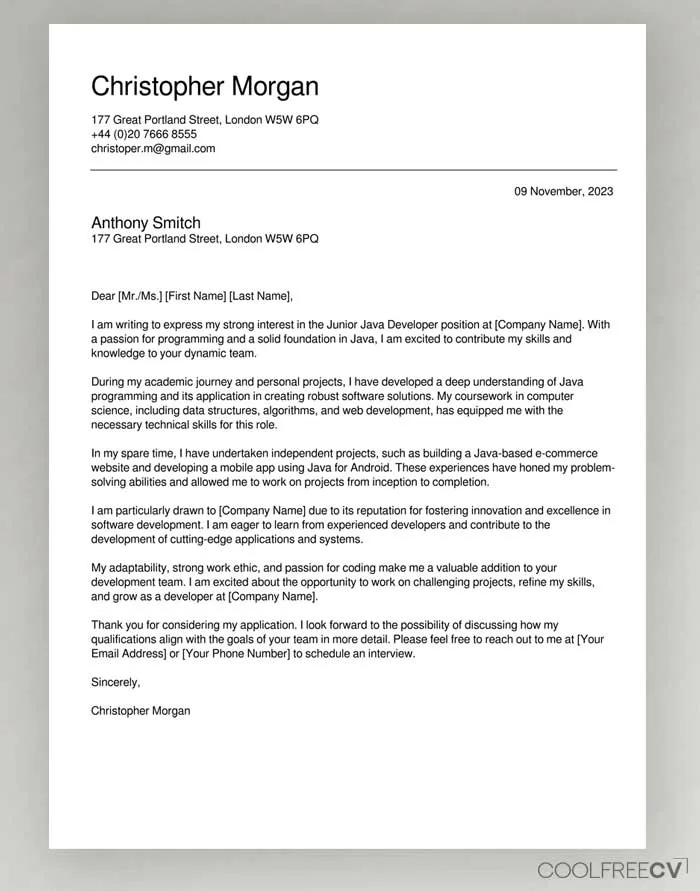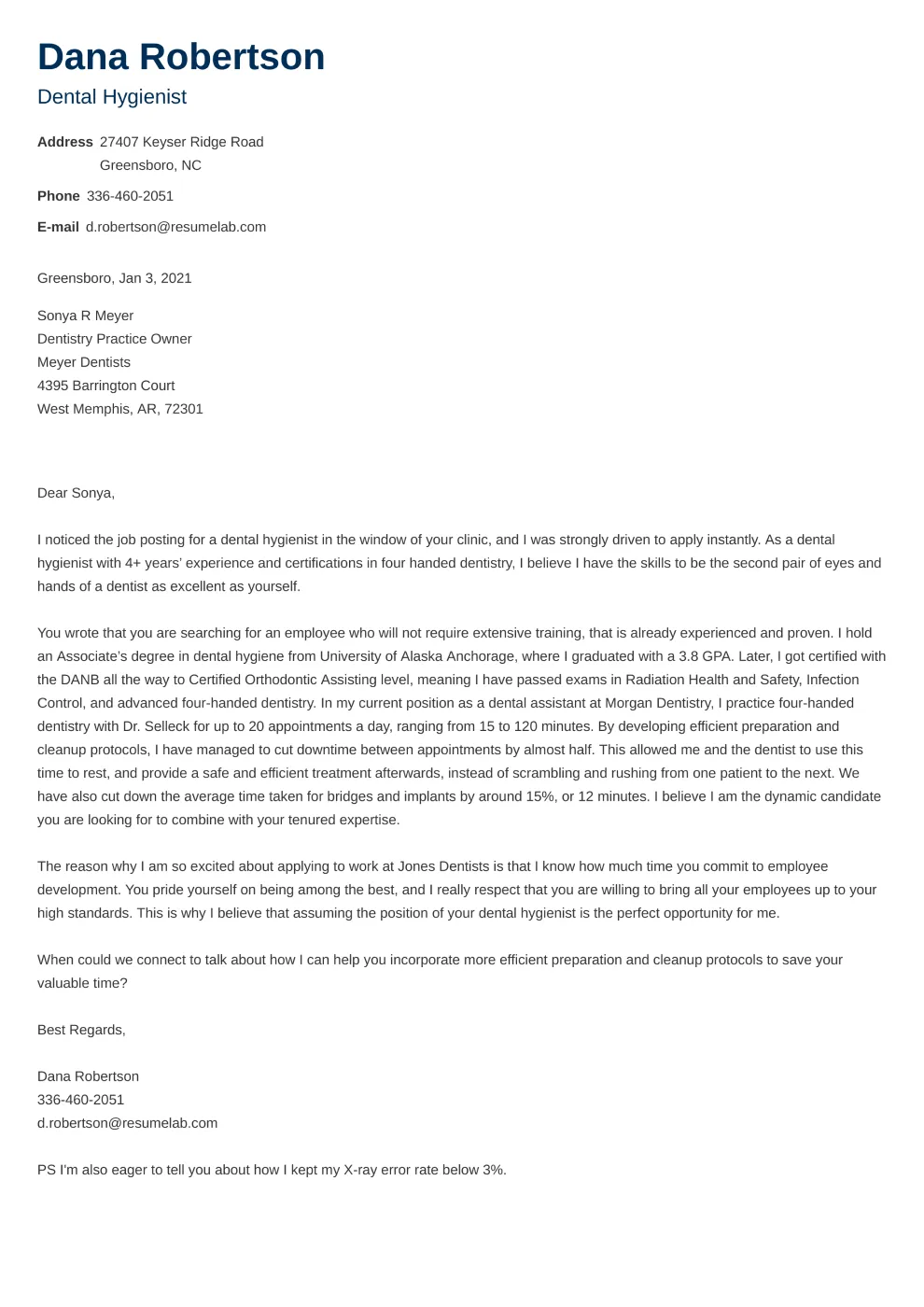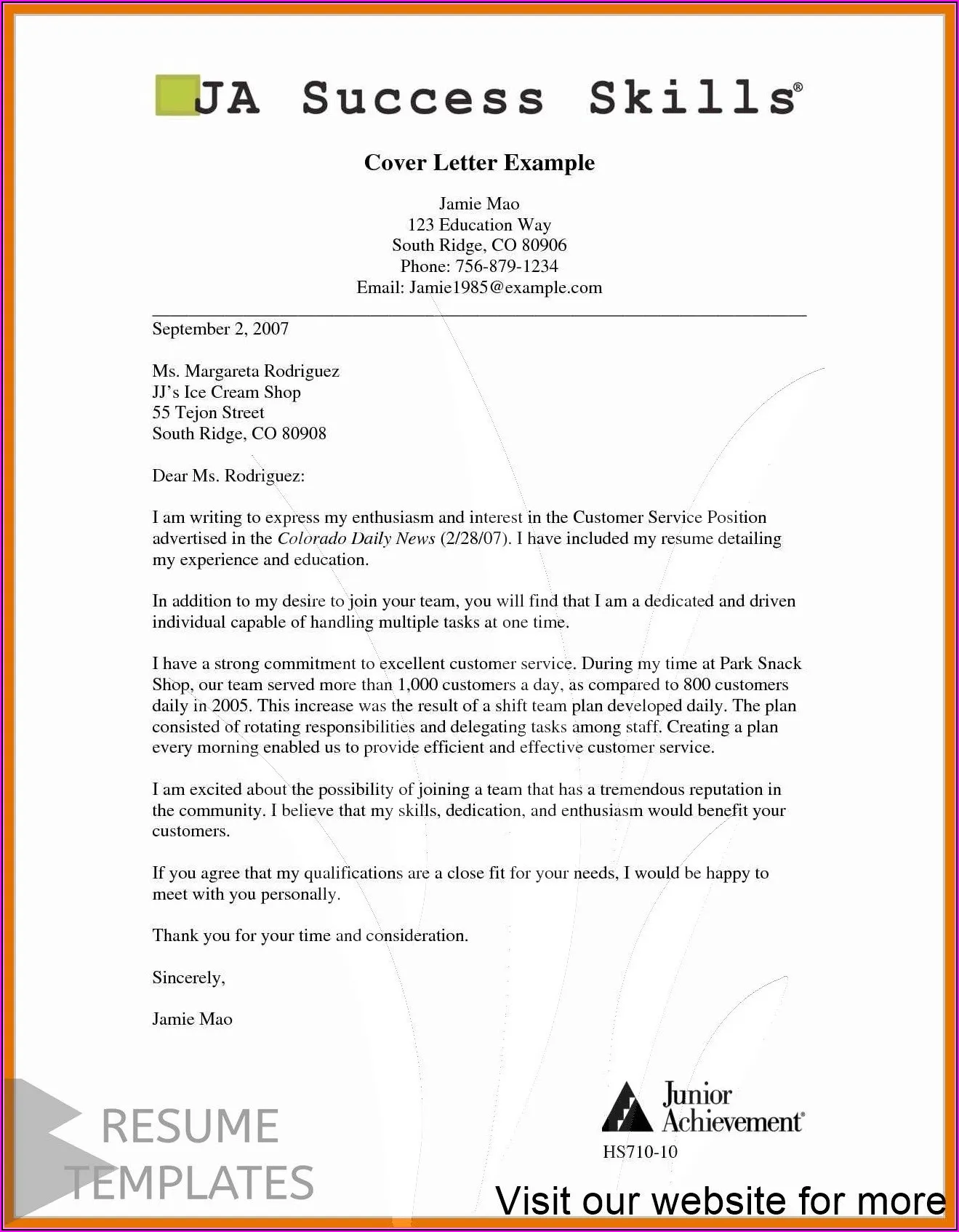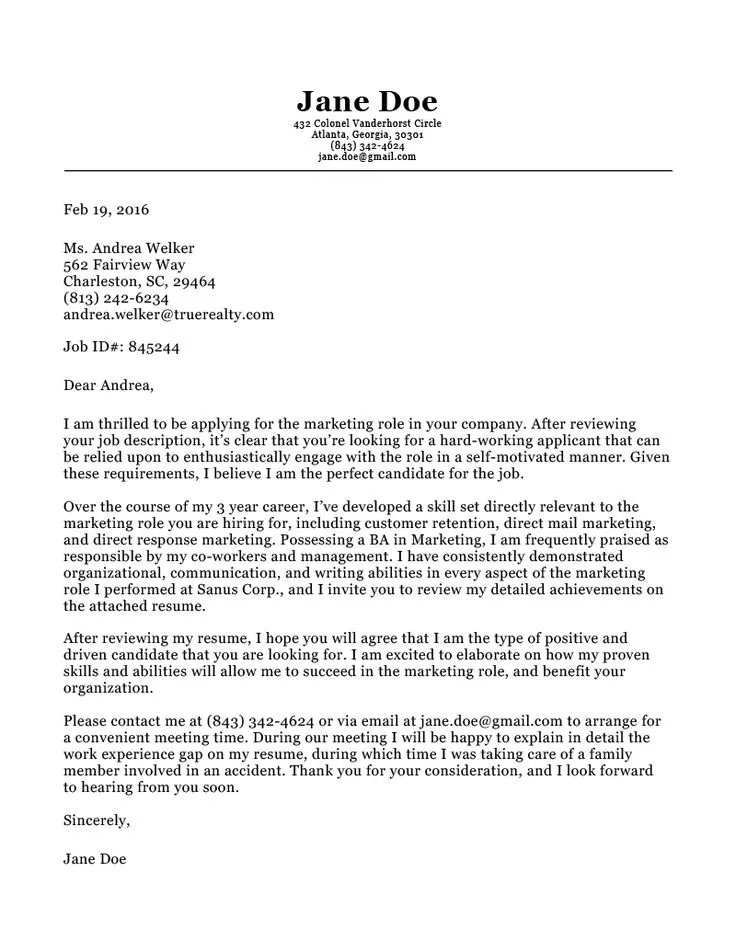Why You Need a Cover Letter
In today’s competitive job market, a well-crafted cover letter can significantly boost your chances of landing an interview. It serves as your initial introduction to a potential employer, allowing you to showcase your personality and highlight why you are the perfect fit for the role. Think of your cover letter as a personalized elevator pitch, designed to capture the reader’s attention and compel them to learn more about you. While your resume provides a comprehensive overview of your qualifications, a cover letter gives you the space to elaborate on your skills and experience, offering valuable context and demonstrating your genuine interest in the position and the company. A cover letter provides a valuable opportunity to make a great first impression.
Cover Letter Basics
Before you start writing, it’s crucial to understand the fundamental components of a cover letter. Begin by including your contact information at the top, followed by the date and the hiring manager’s name and title (if available). The body of your letter typically consists of three to four well-structured paragraphs. The opening paragraph should immediately grab the reader’s attention by clearly stating the specific position you are applying for and how you discovered the opportunity. The subsequent paragraphs should highlight your relevant skills, experiences, and achievements, ensuring a clear alignment with the specific requirements of the job. Finally, conclude the letter by reiterating your enthusiasm, expressing your availability for an interview, and courteously thanking the reader for their time and consideration. A good cover letter is the foundation of a successful job application.
Formatting Your Cover Letter

Proper formatting is essential for ensuring your cover letter is easy to read and presents you as a detail-oriented candidate. It’s wise to choose a professional font like Times New Roman, Arial, or Calibri, keeping the font size between 10 and 12 points. Maintain consistent spacing throughout the document, typically single-spaced within paragraphs and double-spaced between paragraphs. Ensure your text is left-aligned, and opt for a clean, uncluttered layout. Avoid using dense blocks of text; instead, break up your paragraphs to enhance readability. Make sure that your contact information is easily accessible at the top of the letter. Proofread meticulously for any grammatical errors, typos, or inconsistencies. A well-formatted cover letter reflects your professionalism and attention to detail, creating a positive first impression on potential employers.
Using a Resume Builder for Cover Letters
Resume builders often come equipped with cover letter templates and tools designed to simplify the writing process, and guarantee a professional appearance. These builders offer a range of pre-designed templates, allowing you to select one that aligns with your individual style and the specific requirements of the job. Many include helpful prompts and guidance to assist you in structuring your letter effectively, from the opening paragraph to the closing. Some resume builders also offer valuable features such as keyword optimization, suggesting relevant terms to incorporate into your cover letter, based on the job description. Utilizing a resume builder can save valuable time and help ensure you cover all the essential elements, resulting in a polished and impactful cover letter, quickly and efficiently. However, be sure to personalize the template to reflect your unique qualifications and experiences, always tailoring it to each specific job application.
Choosing the Right Resume Builder
When selecting a resume builder, carefully consider factors like ease of use, template variety, and the level of customization options available. Look for a builder that offers an intuitive interface, guiding you step-by-step through the process. Ensure that the builder provides a wide range of cover letter templates, catering to diverse industries and job types. Check if it allows for easy customization, enabling you to modify aspects like fonts, colors, and the overall layout to match your personal branding. Read reviews and compare pricing plans to identify a builder that meets your needs and fits within your budget. Some resume builders also provide additional features, such as grammar and spell-checking tools, which can be invaluable in ensuring that your cover letter is error-free. Consider whether the builder offers helpful resources like writing tips and examples. Prioritizing these factors will help you choose the best resume builder for your needs.
Selecting a Cover Letter Template

Choosing the right cover letter template is an essential step in making a strong first impression. It’s smart to consider the industry you are applying to and carefully select a template that aligns with its professional standards. For creative fields, you may want to use a more visually appealing or modern design, while more traditional industries might require a more formal layout. Ensure the template’s structure provides you with adequate space to effectively highlight your key skills and experiences. Pay close attention to the template’s layout, font, and spacing; these elements should be easy to read and visually appealing. Many resume builders categorize their templates by industry, making it easier to find a relevant option. When selecting a template, make sure it gives you the freedom to express your personality and tailor your letter to the specific requirements of the job.
Customizing Your Cover Letter
Customization is crucial for making your cover letter stand out. Don’t simply fill in the blanks; take the time to adapt the chosen template to showcase your unique qualifications and experiences. Personalize your letter by including the hiring manager’s name and directly addressing the specific job requirements mentioned in the job description. Tailor your content to showcase how your skills and experiences are directly aligned with the position’s needs. Make sure to use relevant keywords from the job description to demonstrate your understanding of the role and the company’s specific needs. Always revise any pre-written content within the template to reflect your individual voice and writing style. Customizing your cover letter is what ensures it resonates with the employer, presenting you as a well-suited and ideal candidate.
Personalizing Your Cover Letter Content
Personalizing your cover letter goes beyond mere customization, it is about injecting your distinct personality and showing genuine interest in the opportunity. Start by thoroughly researching the company and mentioning specific projects, values, or initiatives that truly resonate with you. In the body of your letter, consider sharing a brief anecdote or a compelling example that clearly illustrates your relevant skills and achievements. Highlight what makes you unique and how you can specifically contribute to the company’s success. Express your genuine enthusiasm for the position and articulate why you are so interested in this specific role. Demonstrate to the hiring manager that you have taken the time to understand their unique needs and show them that you are genuinely excited about the prospect of joining their team. Personalization is the key to making your cover letter genuinely memorable.
Highlighting Relevant Skills and Experience

Use your cover letter to emphasize the skills and experiences that are most relevant to the job requirements. Carefully review the job description and identify the key skills and qualifications that the employer is actively seeking. In your letter, provide specific examples of how you’ve demonstrated those skills in your past roles or projects. Be sure to quantify your achievements whenever possible, using numbers and data to clearly illustrate your impact. For example, instead of simply stating “Managed social media accounts,” state, “Increased social media engagement by 30% in six months.” Tailor all your examples to closely match the job description, making sure to highlight the most relevant aspects of your background. By effectively showcasing your skills and experiences, you can convince the hiring manager that you are a very strong candidate.
Showcasing Your Achievements
Don’t just list your responsibilities; instead, showcase your most significant achievements. Make sure to quantify your accomplishments by using data, metrics, and tangible results. Instead of just stating “Managed a team,” state something like “Led a team of five to achieve a 20% increase in sales.” Use dynamic action verbs to accurately describe your accomplishments, such as “achieved,” “implemented,” “developed,” or “managed.” Focus on the positive outcomes of your actions, clearly demonstrating the value that you brought to your previous roles. Provide sufficient context for your achievements, explaining the specific challenges you faced and how you successfully overcame them. Highlighting your achievements provides concrete proof of your capabilities and your potential to significantly contribute to the new role, helping your application stand out.
Proofreading and Editing Your Cover Letter
Proofreading and editing are essential steps in ensuring your cover letter is polished and highly professional. Carefully review your letter multiple times, always checking for any grammatical errors, typos, or inconsistencies. Make good use of a grammar checker to help catch any mistakes that you might miss, but it is always best to not fully rely on it. Read your cover letter aloud to accurately identify any awkward phrasing or areas that could use improvement. It’s a good idea to ask a friend or colleague to proofread your letter, as a fresh perspective can often catch errors that you might have overlooked. Make sure that the overall tone is professional, the language is crystal-clear, and the formatting is entirely consistent. A thoroughly proofread cover letter serves as a testament to your attention to detail and your unwavering commitment to quality, which will undoubtedly make a positive impression on potential employers. Take the time to perfect your letter.
Key Things to Avoid in Your Cover Letter

Avoid common mistakes that can easily undermine your application. Avoid generic opening or closing statements; always personalize these sections to clearly show your genuine interest in the position. Steer clear of clichés and overused phrases, instead, be original and show your unique voice. Avoid using negative language or complaining about previous employers or roles. Don’t include irrelevant information that doesn’t directly align with the specific job requirements. Refrain from using overly technical jargon or excessively complex language. Be concise and focused, avoiding unnecessary details or rambling. Resist the urge to simply repeat your resume; instead, use the cover letter to expand on your most relevant skills and experiences. Remember to keep your cover letter within the standard one-page limit. By avoiding these common pitfalls, you can present a more compelling cover letter and increase your chances of achieving success.
Cover Letter Examples for Inspiration
Reviewing cover letter examples can be an excellent source of inspiration and guidance. Search for examples that are relevant to your specific industry and the type of role you are seeking. Pay close attention to how the authors structure their letters, how they effectively showcase their skills, and how they skillfully express their enthusiasm. Analyze the language and tone used in successful cover letters, and then adapt these elements to your own unique writing style. Many resume builders and online resources offer comprehensive cover letter examples as part of their templates or as readily available resources. Use these examples as a solid starting point, but always remember to personalize your letter to make it completely unique and truly reflective of your individual qualifications. Explore cover letter examples from different industries and job types in order to gain a broader understanding of the range of styles and approaches used in professional applications.
Resources for Cover Letter Writing
Make full use of the various resources available to improve your cover letter writing skills. Numerous websites provide access to free cover letter templates and comprehensive writing guides. Look for useful articles and tutorials that provide valuable tips on writing effective cover letters, highlighting your most relevant skills, and showcasing your most significant achievements. Consider utilizing online grammar and spell-checking tools to help ensure your letter is free from errors. Career counselors and resume writers can provide personalized feedback and expert advice on your cover letter. Reach out and make use of your professional network by asking friends, mentors, or colleagues to review your letter and offer constructive suggestions. By consistently using all the available resources, you can continuously refine your writing skills and create a cover letter that will effectively communicate your full value to potential employers.
